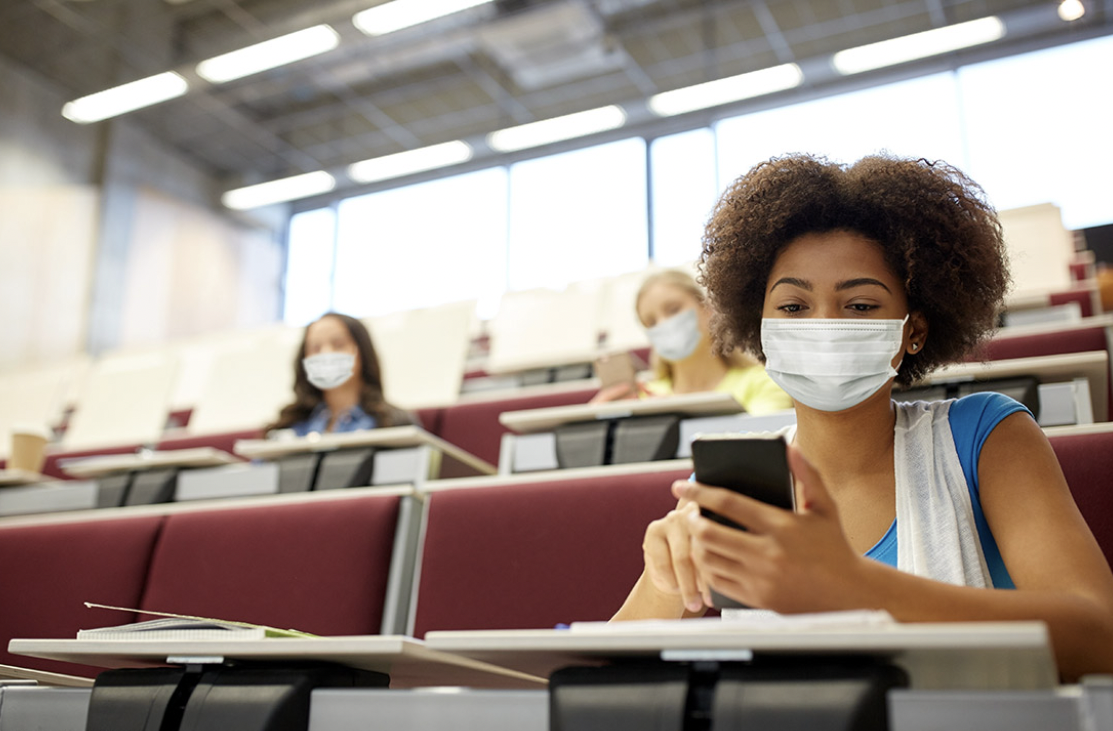Last updated on Mar 31, 2024
By Nick Fioravanti, Staff Writer
The COVID-19 pandemic drastically changed everyone’s daily routines for close to two years. Many people were forced to stay home and isolated from others in order to prevent getting and spreading the illness.
But how were America’s students affected? During the initial quarantine shutdown in early March 2020, schools across the country scrambled to reach a solution that would benefit their students and teachers alike. The general consensus reached by primary and secondary schools throughout the nation was to start teaching virtually through applications such as Zoom or Microsoft Teams.
While those conclusions were reached by the people in charge of running these schools, both students and teachers struggled to adapt to this newfound learning method.
Junior Aleena Fatima spoke from her own experience.
“The pandemic affected my work ethic in my academics negatively, as all my classes were transferred online,” she said. “It encouraged negative habits such as attending Zoom classes from the comfort of my bed on a daily basis.”
The abrupt switch from going to school and learning in a classroom to not even leaving your room to get a full day’s coursework did not inspire diligent academic duties from students.
“It definitely took away from my learning experience,” Fatima said. “I missed out on all the fun senior year milestones such as prom, breakfast, skip day or a trip. I faced difficulties settling into a new university due to the intense restrictions present on campus.”
As difficult as it was for students to learn virtually, teachers also had a hard time acclimating to the new teaching methods.
English professor Jay Diehl found the prospect of teaching during the pandemic to be intriguing yet challenging. Professor Diehl is passionate about teaching and had to figure out a way to substitute the experience of learning in the classroom with a conducive virtual learning experience.
“Teaching my way through COVID took up enough mental energy that my research agenda suffered as a result…it took more mental and emotional energy to get the same amount of teaching done,” he stated.
Professors had to rearrange their lessons and figure out how to provide a helpful learning experience without being there in person.
While some students found themselves able to integrate online learning into their daily routines, the general consensus on social media and throughout student populations was that students found it cumbersome and hard to keep up with.
“I feel as if it takes away from the interactive learning experience that can be found within a classroom,” Fatima stated. “I find that the most productive learning environment to be in is an in-person classroom with a teacher present to answer any questions. It makes it much more human-like to have in-person discussions rather than a virtual conversation where things such as tone can be misinterpreted,” Fatima said.
Even after the pandemic restrictions were lifted, the integration back to fully in-person classes wasn’t all easy. However, Professor Diehl explained that he saw a noticeable difference in the results his classes were achieving from the online variants.
“I didn’t see a sharp dropoff in performance (during Zoom classes), but there was a little noticeable difference in effort. It was tough to try and get the type of engagement you’re used to getting (in a classroom) and I’m proud of how we were able to get through it, but I wouldn’t want to do it again,” Diehl explained. “A few classes, especially ones that had most students online that didn’t get a chance to build a community, struggled. Maybe we were starved for community and the classroom became a bit of a refuge and people were happy to be back together and learning together,” he continued.
The impact of COVID-19 on adolescents will continue to be studied throughout the upcoming years. Regardless, the transition to and from online learning was not an easy one. Students and teachers throughout all levels of education were forced to adapt to it and it affected everyone differently.





Be First to Comment